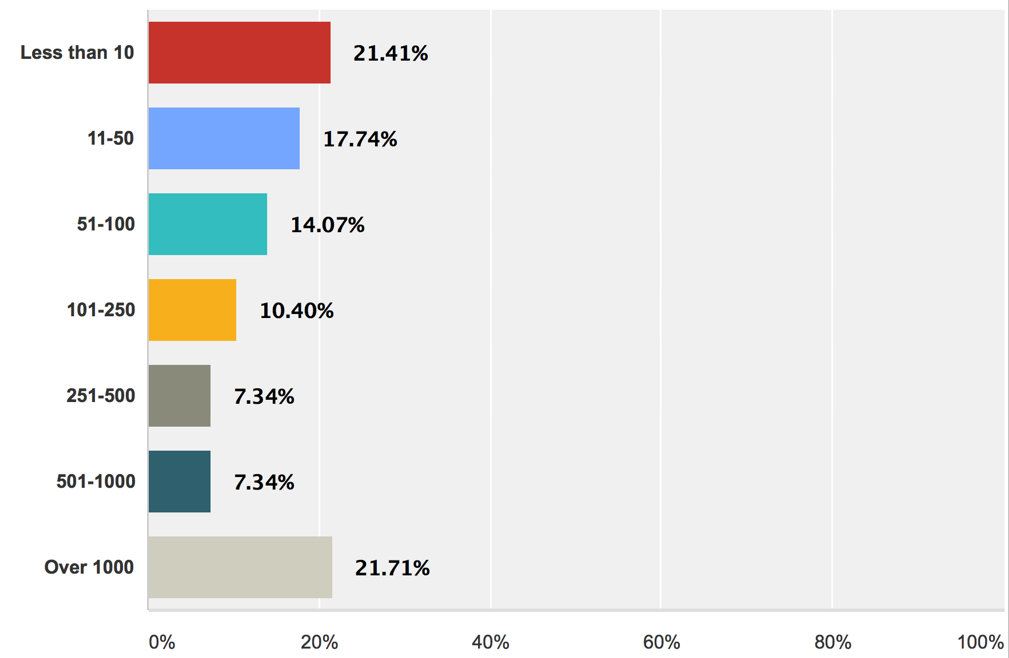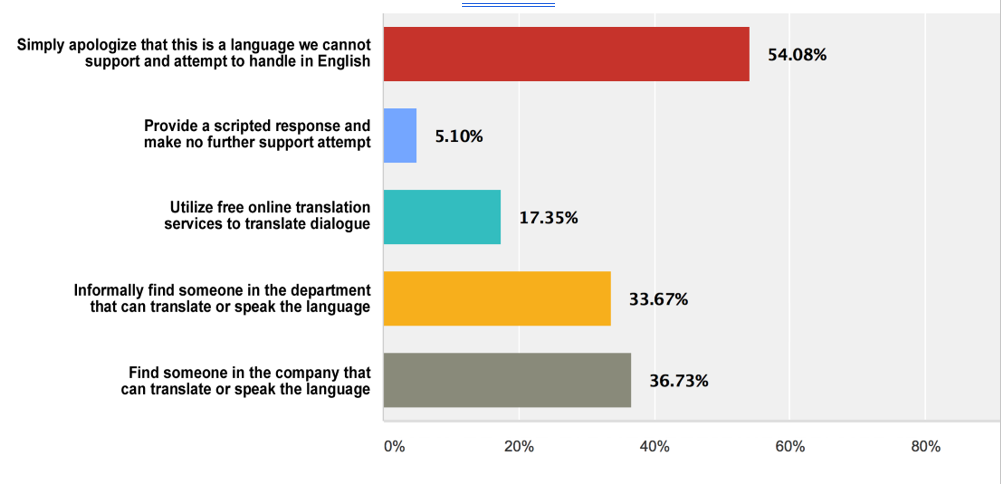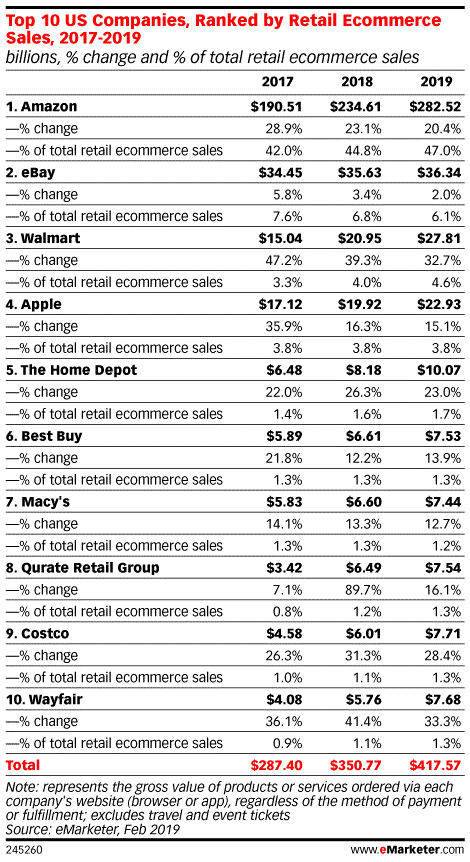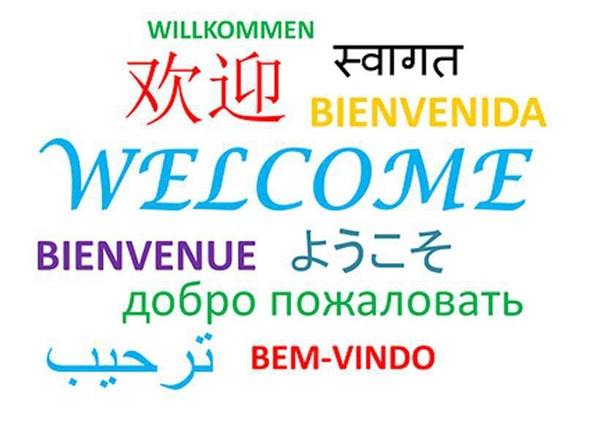Many top retailers, including e-commerce giants like Amazon have been overhauling their approach to the support and engagement of multilingual customers since 2017, in light of these fresh insights which show just how important multilingual customers are in business.
As levels of digital retail spend continue to dwarf bricks and mortar retail spend, the issue of how to improve website engagement has become, for many retailers both big and small, a more pressing concern. Successfully increasing user engagement will typically have a knock-on effect on revenues, so getting the right multilingual strategy right is a paramount concern for modern retailers.
Retailers are asking why the multilingual approach is so important and why multilingual websites are capturing new customers and increasing user engagement.
Multilingual websites
When the internet was created and started being used outside the military, it was dominated by one language – English. Moreover, it was most commonly used in so-called internet “strongholds”, included the USA, Germany, the UK and Sweden. These are countries where there is a heavy emphasis on communication in English and this meant that the English language was often the main language used on websites. However, as the internet has become more widely used and more widely available throughout the world, people have started to customise it more to suit their needs and preferences. Language is a huge part of this dynamic, and one of the main methods of customisation is to use different languages.
Experts looking at the growth of the internet have noted that whereas English used to be the most frequently used internet language, this is rapidly changing, and English is no longer the most widely used language on the internet. The massive decline of English as an internet language is being fuelled by the levels of investment in internet infrastructure in countries including France, China, India, Hong Kong, Italy and Japan, which is encouraging more internet use amongst non-English speakers.
These changes are also creating new norms in retail communication strategies, particularly engagement strategies. Many retailers will have different versions of the same website each catering to different languages and cultures. Other retailers use one website, but modify it or allow it to be modified, depending on its audience. This is commonly achieved using plugins and apps which translate the main language on the website according to local user needs.
The benefits of a multilingual approach: why are retailers going multilingual?
Multilingual websites create more sales and conversion opportunities for retailers. It makes sense that it is easier to sell to people, when you communicate with them in their preferred language. There are millions of prospective customers who can’t be engaged by an English-only website simply because they do not understand the language. As such, retailers are using multilingual websites to extend their reach, and to make their marketing campaigns more impactful.
Use of multilingual websites also aligns with a wider customer-centric strategy. Customer-centricity is something that many agree has driven the success of Amazon, which currently holds almost 50% of US e-commerce market share. Customer centricity is where the needs and preferences of the end consumer are placed first, and a brand engages with a customer in ways that make a positive customer experience more likely. This includes good customer service and ensuring convenience for the customer. Language is a large part of this concept, as customer centricity will in many cases be impossible if the customer is not able to understand the language.
Many studies of customer preferences and buying behaviour highlight how important trust is for customers, and language is a central factor when it comes to winning customer trust. In traditional bricks and mortar shops, customers could visit a shop and automatically obtain reassurance that the shop was real and could be trusted. Shopping in a bricks and mortar store is preferred by some customers because they can see, feel and try out products that are on sale. Eliciting the same level of trust among customers in respect of an online shop is more difficult, because customers simply don’t have the same connection that they would have with a bricks and mortar store. When a website is communicating with a customer in their preferred language, this makes it easier for that customer to make the decision to trust the website. Indeed, Willy Brandt, the former German chancellor, summed the problem of language deficit in sales up very powerfully when he said “If I’m selling to you, I speak your language, but if I’m buying, dann müssen Sie Deutsch sprechen.”
Not only does a multi-lingual website allow for communication in the customer’s preferred language, the website can reflect cultural norms and traditions more fully and this allows for greater levels of rapport and trust to be established between a brand and their customers. Some experts have referred to this using the term “cultural comfort zone”. The idea is that different cultures have different ways of doing things, different currencies and customers can see these modalities as “comforting” and reassuring. This is another way therefore to effectively communicate with website users and build the trust that is required to fully engage with customers.
London is the perfect example. A melting pot of languages, cultures and traditions, Londoners converse in more than 300 languages every day in bustling expatriate communities. From Chinatown where Cantonese and Mandarin are spoken every day to Stamford Hill in the North of London, where Yiddish is widely spoken, London has a large number of untapped multilingual markets.
The UK government looked at how language and business are interconnected and its research suggests that the UK is losing as much as 48 bn GBP annually, just as a result of retail language barriers. Most of all the government’s research sought to emphasise that “language” is a homegrown problem as much as it is an issue that involves reaching out to foreign audiences online. The reality is that a so-called monolinguistic approach, which is how a sole focus on English-speaking has come to be known is not just a problem for businesses seeking to succeed online – businesses can attract much more footfall by having a multilingual strategy and targeting multilingual audiences which opens up new income streams for retailers and helps to augment a brand’s position compared to their major competitors.
Multilingual websites can also help to improve a brand’s SEO position and visibility in search results. The algorithm used by Google to decide which websites to show higher up in search results favours websites that have greater levels of accessibility and are user friendly. As such, having a multilingual website will gain a retailer more traction with popular search engines like Google whose priority is to show its users helpful, engaging and original content.
US customer care trade body ICMI conducted a major study of the impacts of multilingual websites and services on customers and retailers’ competitive position in 2014. The study concluded that 86% of the customer contact centres surveyed had reported having non-English speaking customers. Only 66% of retailers had formal customer support options available in languages other than English. Of the retailers surveyed, only half realised that competitive position could be improved overall by facilitating communication in different languages. 72% of the retailers included in the survey stated that their customers reported higher levels of customer satisfaction when communication in different languages was facilitated through customer service and on an actual website. 58% of the retailers surveyed stated that offering multilingual services and communication increased loyalty to their brand, amongst their customers. Additionally, retailers stated that more than 70% of their multilingual customers had more positive experiences on account of facilitation of multilingual communication and services including customer support.
The study also investigated the position of retailers in the USA and the process of deciding whether to provide multilingual services to their customers. Demographics relating to foreign-born Americans highlighted the extent of the opportunities that introduction of multilingual services and communication could create. The study quoted the US Census of 2011, which confirmed that 21% of the US population aged 5 years and over spoke a language other than English, in their home. In the USA this demographic is referred to as the LEP, or Limited English Proficient segment. Furthermore, 80% of foreign-born Americans spoke a native language other than English. 9% of the US population was unable to speak English to a high enough standard to enable them to do business over the telephone.
This important study also considered the question of how many non-English telephone calls were received each month by the retailers surveyed, shown below in Diagram 1. Whereas 21% stated that this figure was less than 10, over 21% of respondents stated that more than 1000 such calls were received. This aspect of the study highlights the potential to be unlocked when multilingual services are added by a retailer.
Diagram 1. How many non-English telephone calls were received each month

When asked how unexpected multilingual inbound calls were responded to, the retailers made the following range of responses. As shown in Diagram 2, with more than 50% of the surveyed retailers acknowledging that a non-English call was dealt with with an apology about not understanding languages other than English, again the scope for opportunities that addition of multilingual services affords retailers is highlighted.
Diagram 2. How unexpected multilingual inbound calls were responded to
s that do not spe ak a language you formally support?
ak a language you formally support?
The study also considered the barriers encountered by retailers who considered adding multilingual services to their businesses, and many agreed that cost of multilingual services was a major factor in a decision not to provide such services.
What retailers are taking multilingual functionality seriously?
Acknowledging the importance of multilingual functionality, Indian e-commerce giant, Flipkart has introduced Hindi functionality for its user interface. The rationale is that multilingual functionality not only makes the brand more customer centric, it also creates a whole new stream of potential users. Additionally, the move reflects the fact that many predominantly Hindi-speaking cities across Indian are only now getting access to internet facilities. The new functionality is also expected to be welcomed by existing English-speaking users, because many of these users are multilingual but express a preference to work using Hindi. In fact, Flipkart is predicting that the Hindi interface will outstrip the English interface in terms of membership and use, by 2021 and Flipkart intends to roll out interfaces in different Indian languages by early 2020.
Since 2017 Amazon has considered multilingual functionality to be an important part of its customer-centric approach. Indeed since 2017 the e-commerce giant has added Czech, Hindi and Tamil to its websites. In total, Amazon operates 15 websites outside of the US, and these websites support a total of 18 different languages.
Similarly, Netflix has recently added French and Indonesian to its overall functionality. In total, it has added 26 languages to its system, in a bid to reach more users and improve its overall customer-centricity. 50% of the expansion in its language repertoire has taken place since 2017.
Uber is another example of a company that has taken multilingual capability very seriously. In 2019 alone, Uber has added 7 new languages to its apps and websites. Uniquely, Uber has also introduced an app called Uber Lite aimed at its customers in India and other high growth, emerging markets. This is designed to address the problem that many prospective customers in these types of emerging markets don’t actually have smartphones, or access to internet or mobile internet services.
AirBnB is another business with an ever-expanding multilingual strategy, and it has just added the Arabic language to all of its apps and platforms, in addition to Arabic support services. In doing so AirBnB recognised that there was an untapped market for Arabic speakers, since many in the region were already using AirBnB in English. This move has provided the property sharing site a further 80,000 listings within the Middle East including the UAE. The added functionality also adds impetus to the “experiences” side of the AirBnB business model. As of 2019, there are more than 750 registered experiences available in the Middle East and North Africa.
Overcoming language barriers using AI and multilingual strategy
Many barriers prevent the adoption of a multilingual approach by retailers, with cost being one of the most frequently cited issues. Moreover, not all retailers can solve the issue of incorporating new languages easily and for some, like Walmart which unsuccessfully entered the Greek market only to exit shortly afterwards, incurring massive losses - targeting new customers and markets can be very risky. A poorly translated website, for example, is as likely to alienate multilingual customers as no language strategy at all is.
A retailer needs to identify which languages will draw in the most customers and choose the languages they will support, carefully. Moreover, retailers should recognise that traditions and culture are often just as important as language in attracting new multilingual customers.
AI has the potential to solve many of these so-called “barrier” problems when it comes to multilingual strategy. Retailers already using AI, in the form of robots, holograms and digital displays which greet customers and provide basic customer service assistance, like directions in-store and confirmation of opening hours, can easily be adapted to cater to the multilingual customer. It is surprising therefore that although AI systems are already in place for so many retailers, a large number of these systems aren’t being exploited to cater for the multilingual customer. This is despite how savvy adoption of AI by certain retailers has been shown to be highly effective at increasing market share and building better profit margins. Walmart is a prime example. Having invested heavily in AI and tech since 2017, when it held 3.3% of the US market for online sales market share for the brand has seen significant growth. As shown below, in 2019, the brand’s overall market share has grown to 4.6%.

Why are multilingual websites capturing new customers and increasing user engagement?
It is easy to discount multilingual functionality as something that’s “too expensive” or “too much hassle” to try, but as we have seen in this article this approach only serves to shut out many millions of customers and numerous untapped markets for existing retailers.
Going multilingual has the power to unlock significant profits for retailers all over the world, as many high-profile brands like Amazon, Uber, AirBnB and Netflix have shown, but retailers need to plan a multilingual approach very carefully, because these are not without risk.
